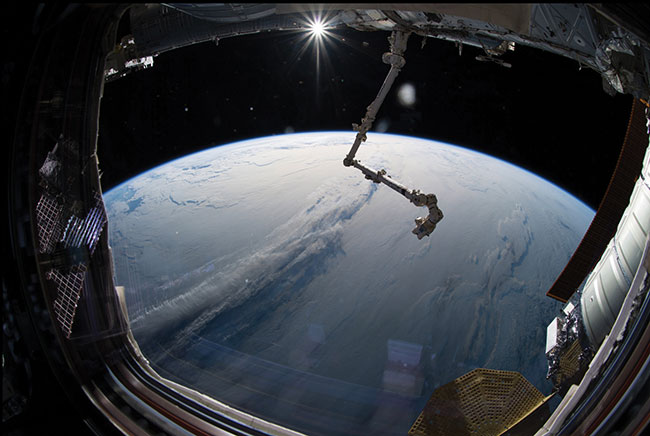
News
Technology
Uses for Robotic Arm Technology
August 25, 2020 By Jay Koblun
 Canadarm2. Photo courtesy of CSA
Canadarm2. Photo courtesy of CSA Robotic arm technology has many uses in space, on earth, and has many medical benefits. The Canadian Space Agency lists off some of those benefits and uses.
In space
The Shuttle’s robotic arm has performed many kinds of tasks over the years. It has set satellites into orbit and retrieved others for repair. The first time Canadarm was used in one of many International Space Station (ISS) assembly missions was for Mission STS-88, December 1998.
Canadarm has always performed flawlessly. It supports astronauts during spacewalks. Its elbow and wrist joint cameras have provided visual inspection of the Shuttle and its payload. It has knocked ice off the Shuttle’s wastewater dumping vents and loosened a jammed solar array panel.
And it has had two IMAX cameras attached to its lower boom so the experience of space could be brought to the movie theatre for everyone to enjoy.
On earth
The robotic technology used in Canadarm provides humanlike dexterity here on Earth in a variety of environments. These may include servicing nuclear power stations, remote servicing of utility power lines, or cleaning up radioactive and other hazardous wastes.
For example, MacDonald, Dettwiler and Associates Ltd. (MDA), which developed Canadarm, has also designed a Light Duty Utility Arm system to inspect and analyze radioactive waste in underground storage tanks. This system consists of a modular, seven-joint manipulator attached to a telescopic vertical positioning mast. A mobile system deploys the manipulator in the tank.
Remotely operated robotic systems have enjoyed wide application in industry and other fields. In medicine, Canada has been a leader in the development of techniques involving robotic surgery operated from a remote location.
A medical benefit
The Seaman Magnetic Resonance Centre in Calgary has teamed up with MDA Space Missions to adapt space robotics for use in surgery. The benefits are improved accuracy, efficiency, and the quality of patient care. “NeuroArm” uses miniaturized tools such as laser scalpels with pinpoint accuracy and it can also perform soft tissue manipulation, needle insertion, suturing, and cauterization.
The Centre for Minimal Access Surgery at McMaster University’s St. Joseph’s Hospital in Hamilton, Ont., is a telesurgery pioneer. In a successful pilot project, the surgeon directed medical staff from a remote, high technology, operating console and conducted robotic surgical operations on patients hundreds of kilometres away in a hospital in North Bay, Ontario.
The Canadian Space Agency (CSA) has promoted the application of this medical technology for missions here on Earth involving Canadian astronauts Robert Thirsk (Neemo 7) and Dave Williams (Neemo 9).
Print this page